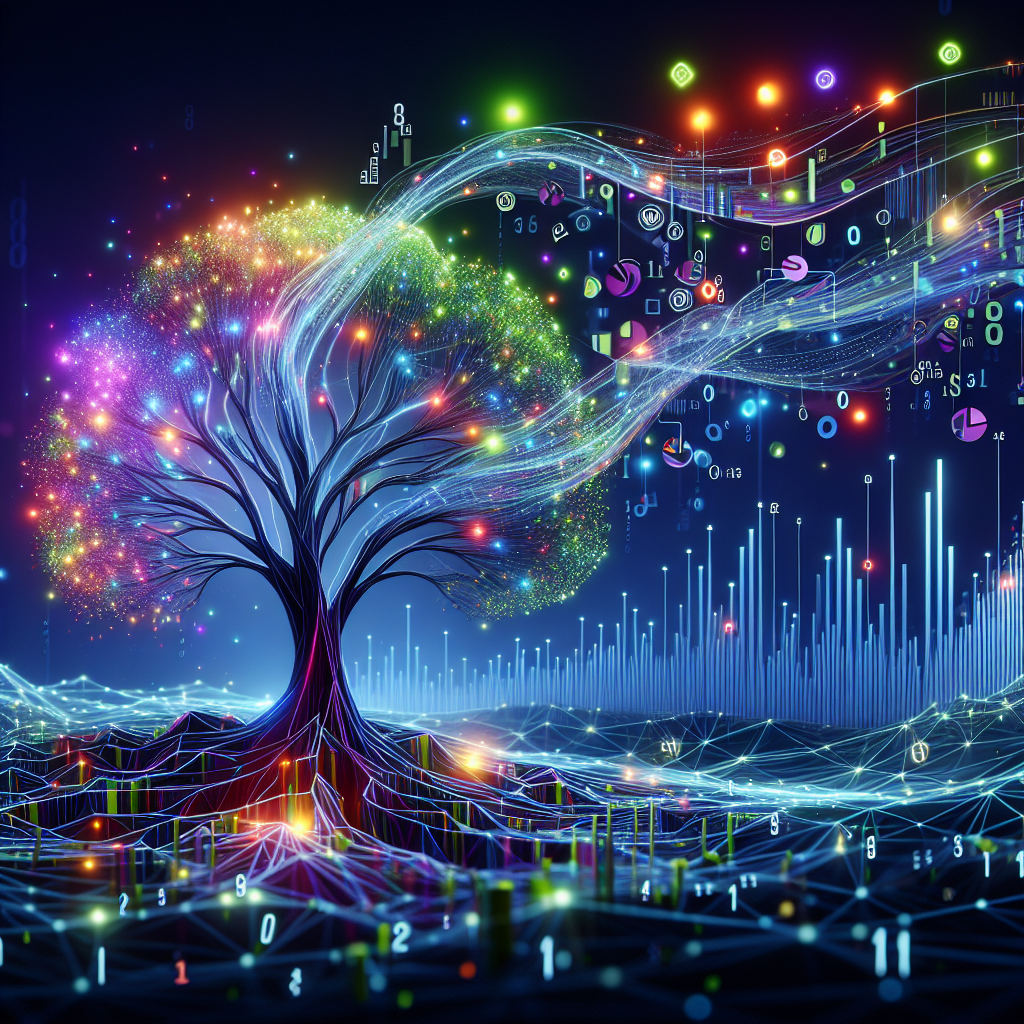In today’s data-driven world, the ability to visualize and interpret data is crucial for businesses to make informed decisions. Data visualization helps us understand complex datasets, identify trends, and communicate insights effectively. With the advancements in artificial intelligence (AI), specifically generative AI, we now have the ability to create more interactive and visually appealing data visualizations than ever before.
Generative AI is a subset of AI that focuses on creating new content or data based on patterns and examples from existing datasets. This technology has been used in various fields such as art, music, and gaming, but its application in data visualization is relatively new. By leveraging generative AI for data visualization, businesses can create dynamic and engaging visualizations that capture the attention of stakeholders and provide valuable insights.
One of the key benefits of using generative AI for data visualization is the ability to automate the process of creating visualizations. Traditionally, data visualization required manual input from designers and data analysts to create charts, graphs, and dashboards. With generative AI, businesses can now automate the process of generating visualizations based on the underlying data. This not only saves time but also allows for more iterative and exploratory analysis of the data.
Another advantage of using generative AI for data visualization is the ability to create more personalized and interactive visualizations. Traditional static visualizations can be limiting in terms of engagement and interactivity. By using generative AI, businesses can create visualizations that adapt to the user’s preferences and provide a more interactive experience. This can help stakeholders better understand the data and make more informed decisions.
Furthermore, generative AI can help businesses uncover hidden patterns and trends in their data that may not be apparent through traditional data visualization techniques. By analyzing large datasets and generating visualizations based on the underlying patterns, businesses can gain new insights and make more strategic decisions. This can be particularly useful in industries such as finance, healthcare, and marketing, where data patterns can have a significant impact on business outcomes.
In addition to creating more engaging visualizations, generative AI can also help businesses improve the accuracy and reliability of their data visualizations. By automating the process of creating visualizations, businesses can reduce the risk of human error and ensure that the visualizations are based on accurate and up-to-date data. This can help stakeholders trust the insights derived from the visualizations and make more confident decisions.
Overall, leveraging generative AI for data visualization can help businesses create more engaging, personalized, and accurate visualizations that drive better decision-making. By automating the process of creating visualizations, businesses can save time, uncover hidden patterns in their data, and improve the overall quality of their insights.
FAQs:
1. What is generative AI?
Generative AI is a subset of artificial intelligence that focuses on creating new content or data based on patterns and examples from existing datasets. This technology has been used in various fields such as art, music, and gaming, but its application in data visualization is relatively new.
2. How can generative AI improve data visualization?
Generative AI can improve data visualization by automating the process of creating visualizations, creating more personalized and interactive visualizations, uncovering hidden patterns and trends in data, and improving the accuracy and reliability of visualizations.
3. What are some examples of generative AI in data visualization?
Some examples of generative AI in data visualization include creating dynamic and engaging visualizations that adapt to user preferences, analyzing large datasets to uncover hidden patterns and trends, and automating the process of creating visualizations based on underlying data patterns.
4. How can businesses leverage generative AI for data visualization?
Businesses can leverage generative AI for data visualization by using it to automate the process of creating visualizations, create more engaging and interactive visualizations, uncover hidden patterns and trends in data, and improve the accuracy and reliability of their visualizations.
5. What are the potential challenges of using generative AI for data visualization?
Some potential challenges of using generative AI for data visualization include the need for large and high-quality datasets, the risk of bias in the generated visualizations, and the complexity of implementing and maintaining generative AI models.
In conclusion, leveraging generative AI for data visualization can help businesses create more engaging, personalized, and accurate visualizations that drive better decision-making. By automating the process of creating visualizations, businesses can save time, uncover hidden patterns in their data, and improve the overall quality of their insights. As generative AI continues to advance, we can expect to see even more innovative and impactful uses of this technology in data visualization.

